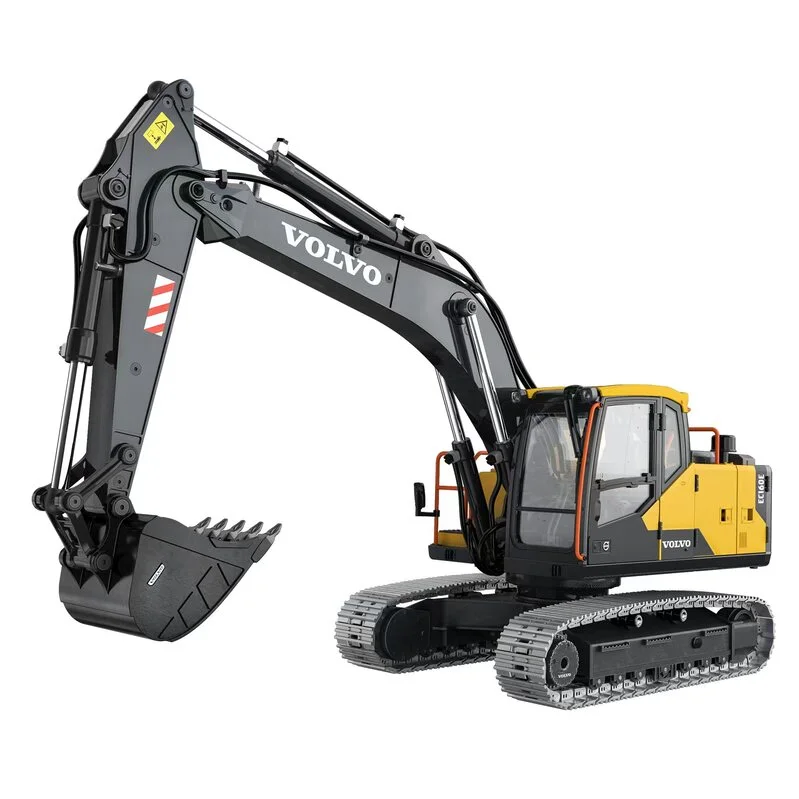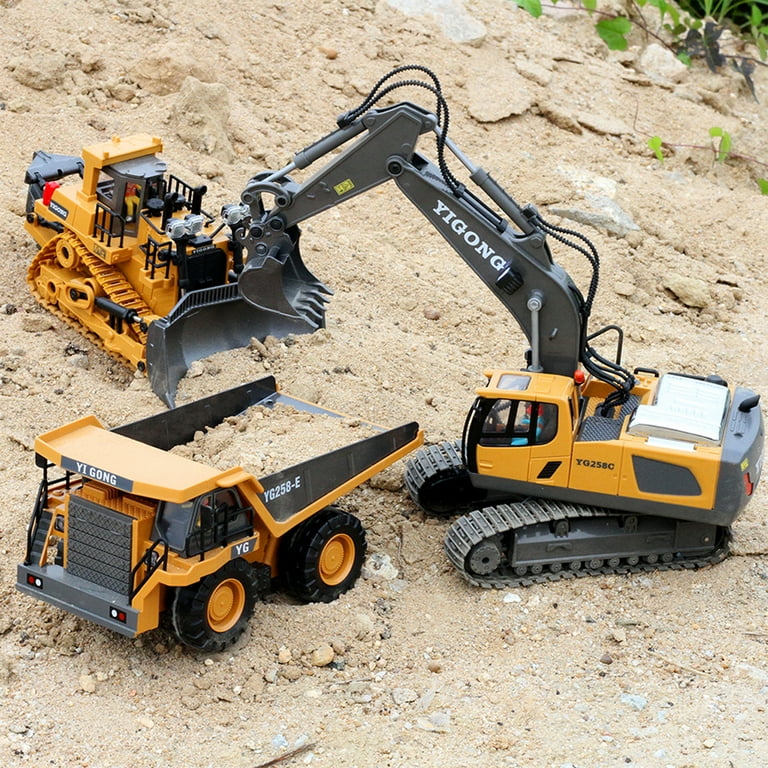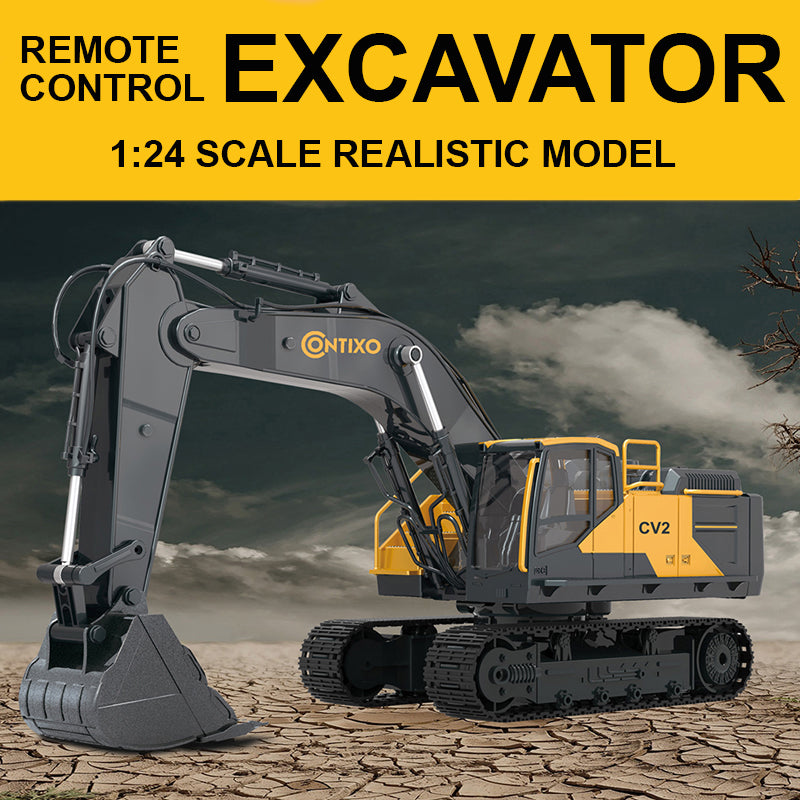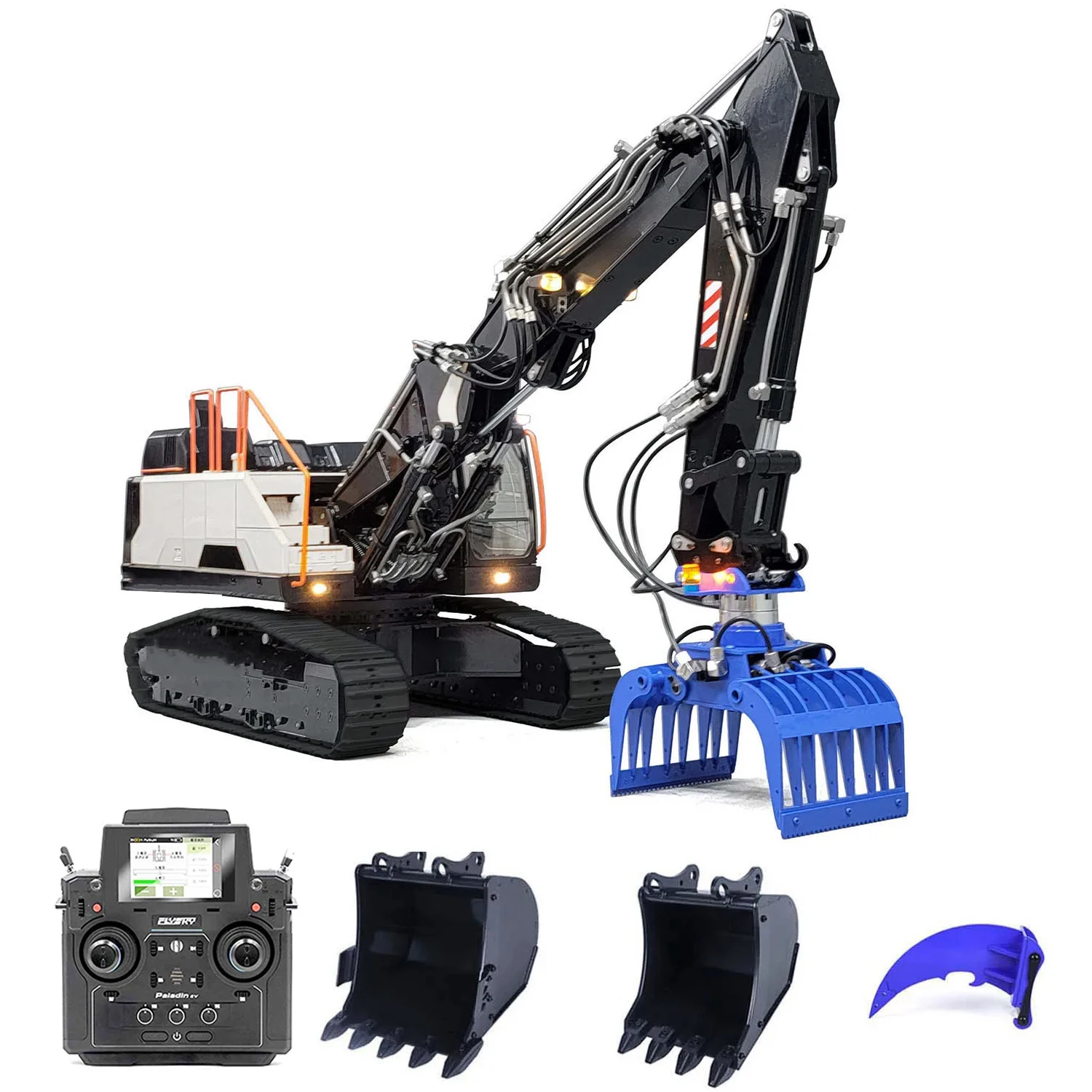The Crucial Features of Excavator That Keep It a Must-Have Device
Excavators are essential in the building and landscape design sectors. Their versatile accessories enable a series of jobs, from excavating to demolition. Additionally, they flaunt premium excavating depth and reach, powered by durable engines. Driver comfort and portable styles improve functionality in various environments. Nonetheless, what really establishes excavators apart are their advanced hydraulic systems and resilience. Recognizing these functions can make clear why they are taken into consideration essential devices on any kind of work website.
Flexible Attachments for Enhanced Functionality
Excavators are powerful devices on their own, the addition of versatile add-ons greatly enhances their performance. These attachments transform a standard excavator right into a multi-purpose device, suitable for a range of tasks. Buckets, for instance, come in various sizes and shapes, allowing operators to dig, scoop, and relocate products successfully. Hydraulic thumbs can be added for enhanced gripping and handling of cumbersome things, such as logs or rocks.Furthermore, specialized add-ons like augers and breakers permit exploration and demolition job, increasing the excavator's energy on building and construction websites. remote control excavator. Grapples are an additional choice, ideal for arranging and relocating debris. This flexibility not only raises efficiency yet additionally minimizes the requirement for several devices, conserving time and costs. By gearing up excavators with the appropriate accessories, drivers can take on varied projects, making them crucial in the building sector
Superior Digging Deepness and Get To
Excavators are created with exceptional excavating depth and reach, allowing them to navigate in limited spaces and gain access to hard-to-reach areas. This capacity is vital for different building and construction and excavation tasks, where standard equipment might fail. With adjustable boom arms and extendable tracks, excavators can quickly browse uneven surface while preserving stability.The excavating depth can differ substantially among models, usually ranging from 10 to 25 feet, relying on the style and objective. This feature allows operators to dig deep into structures, trenches, and other deep structures successfully. Additionally, the reach of an excavator enables for precise excavating and product handling without repositioning the device frequently, saving time and labor costs.Ultimately, the superior digging depth and reach of excavators make them indispensable for professionals seeking to finish intricate jobs with accuracy and performance. Their adaptability boosts performance on task websites, showcasing them as a vital tool in modern-day building.
Powerful Engine Efficiency

When it concerns effectiveness and productivity on building and construction sites, powerful engine efficiency plays a critical function in the capabilities of an excavator. A durable engine produces significant horsepower, allowing the device to tackle durable tasks with simplicity - remote control excavator. This toughness translates into faster cycle times, allowing drivers to complete tasks extra quickly.Additionally, effective engines offer the essential torque to handle challenging surfaces and varied loads, making certain that the excavator can do successfully under different problems. Whether it is raising, digging, or moving materials, the engine's performance straight impacts the general operational effectiveness of the machine.Furthermore, developments in engine technology have led to enhanced fuel efficiency, lowering operational costs while keeping power output. Inevitably, the engine's efficiency acts as the backbone of an excavator, verifying its condition as an essential device in the construction industry
Advanced Hydraulic Systems

Boosted Raising Capability
A substantial improvement in raising capacity can be credited to advanced hydraulic systems located in contemporary excavators. These systems utilize high-pressure fluid to create greater force, allowing drivers to raise much heavier tons easily. The design behind these hydraulics assurances peak efficiency, offering a remarkable power-to-weight ratio that boosts total effectiveness. Consequently, excavators can take on requiring tasks, such as raising huge materials or tools, without compromising security. In addition, the durable layout of hydraulic components adds to increased toughness and dependability, making them appropriate for numerous construction settings. This boosted training ability not just minimizes the moment required for jobs but additionally minimizes the requirement for additional equipment, confirming necessary for both efficiency and cost-effectiveness in the building market.
Boosted Accuracy Control
Although typical excavators often battled with precision, modern hydraulic systems have transformed control systems, allowing operators to perform tasks with impressive precision. These advanced systems use symmetrical control shutoffs that permit smoother and a lot more responsive motions, substantially minimizing the margin for mistake. Operators can now finely tune the excavator's movements, making it less complicated to navigate tight areas and deal with delicate materials. Enhanced responses systems better educate operators of real-time performance, making sure optimal coordination between the machine and operator. This enhanced accuracy not just boosts efficiency yet additionally enhances safety on job sites, decreasing the threat of accidents. Because of this, modern excavators geared up with innovative hydraulic systems are important devices for building and excavation projects calling for precise accuracy.
Operator Comfort and Visibility
Driver convenience and exposure are essential elements in the style of contemporary excavators (remote control excavator). Attributes such as ergonomic seat style, boosted exposure options, and efficient control layouts greatly improve the driver's experience and efficiency. Focusing on these elements guarantees that drivers can work properly and securely in various conditions
Ergonomic Seat Design
Comfort and presence are vital in excavator design, with the ergonomic seat playing an important role in boosting the driver's experience. An ergonomic seat is crafted to sustain the operator's body, decreasing Discover More Here fatigue during lengthy hours of operation. Flexible features, such as seat elevation, backrest angle, and back support, satisfy individual preferences and advertise excellent position. These adjustments improve comfort and enable the driver to preserve focus on tasks without discomfort. Additionally, a well-designed seat can give much better side support, enabling smoother handling when the excavator is in procedure. This thoughtful layout not just boosts productivity but also adds to general safety, guaranteeing that operators can execute their responsibilities properly and efficiently.
Boosted Visibility Features
The layout of an excavator prolongs past just the seat, with boosted exposure features playing a considerable function in operator convenience and total safety and security. Big windows and tactically located mirrors give drivers with a clear view of their environments, reducing dead spots. This layout consideration enables better spatial awareness, which is crucial in hectic job settings. Furthermore, many excavators include rearview cams and progressed surveillance systems that aid operators in navigating limited spaces. The assimilation of these exposure features not just advertises safety but also minimizes operator exhaustion by allowing easier tracking of workplace. Inevitably, boosted visibility adds to extra efficient operations and assists ensure that excavators can perform their tasks efficiently and securely.
Control Design Performance
While handling complex job sites, an effective control format considerably enhances both driver convenience and exposure. A well-designed control configuration guarantees that operators can access necessary features with minimal initiative, reducing fatigue throughout lengthy hours. Ergonomic joystick positionings and intuitive switch plans permit seamless operation, allowing drivers to keep focus on the task handy. In addition, clear exposure of both the job area and the control panel is critical for security and accuracy. Modern excavators typically include adjustable seating and control settings to fit numerous driver preferences, additionally boosting comfort. Inevitably, a thoughtfully developed control layout not just enhances productivity yet likewise promotes a much safer working environment by enabling operators to react quickly to altering problems.
Compact Layout for Urban Environments
As urban building sites frequently face area restraints, a portable design ends up being essential for excavators operating in these atmospheres. These equipments are engineered to navigate limited areas, permitting reliable ability to move in jampacked work sites. A reduced footprint enables them to work closely to existing structures, lessening disturbance and maximizing productivity.The compact design frequently consists of shorter tracks and a tighter turning distance, assisting in operation in narrow alleys and confined areas. Lightweight materials contribute to relieve of transportation, making it easier to move the excavator from one place to an additional within the city landscape.Additionally, lots of portable excavators are outfitted with features such as functional accessories and extendable arms, enhancing their performance while preserving a tiny dimension. This adaptability allows drivers to tackle a range of jobs, from digging to demolition, all while fitting perfectly right into the restraints of urban settings.

Sturdiness and Upkeep Considerations
Sturdiness stands as a necessary aspect in the efficiency and durability of excavators, specifically in requiring metropolitan environments. These machines are subjected to rigorous conditions, including differing dirt kinds, extreme temperatures, and high-frequency usage. Top quality materials and robust building are required for guaranteeing that excavators can withstand these obstacles without jeopardizing functionality.Regular maintenance is equally important in preserving resilience. Scheduled examinations, prompt oil adjustments, and the replacement of used parts contribute substantially to an excavator's life expectancy. Operators must also pay focus to hydraulic systems, tracks, and undercarriages, as these parts often bear the burden of wear and tear.Investing in long lasting excavators with comprehensive upkeep plans enhances reliability and reduces downtime, ultimately leading to boosted productivity on construction websites. Recognizing the interplay between longevity and maintenance is essential for any person thinking about the procurement of an excavator for city projects.
Regularly Asked Inquiries
Just How Do Excavators Contrast to Various Other Building Tools?
Excavators stand out among building equipment because of their versatility, allowing tasks such as grading, digging, and training. Contrasted to others, their hydraulic capacities provide better efficiency and power, making them vital on numerous work sites.
What Safety Includes Are Consisted Of in Modern Excavators?
Modern excavators integrate numerous security additional reading functions, consisting of rollover security systems, alarm systems, and advanced visibility improvements. These elements interact to decrease risks, making certain operator security while improving effectiveness on building sites and other requiring environments.

Can Excavators Be Used in Winter Months Conditions?
Excavators can without a doubt be utilized in winter months problems, given they are furnished with appropriate winter season attachments and safety measures are taken. Proper upkeep and changes improve their efficiency, making sure effective operation despite difficult weather situations.
What Is the Average Lifespan of an Excavator?
The typical life expectancy of an excavator normally ranges from 7,000 to 10,000 hours of operation. This period can substantially depend on upkeep methods, running problems, and the specific version's toughness and design attributes.
Exactly how Do I Choose the Right Excavator Dimension for My Project?
Picking the best excavator size includes assessing task extent, site problems, and material types. Consider elements like reach, depth requirements, and weight capability to guarantee maximum efficiency and security throughout procedure. Size matters considerably in project success. Furthermore, the reach of an excavator permits for accurate digging and material handling without rearranging the maker regularly, conserving time and labor costs.Ultimately, the exceptional digging depth and reach of excavators make them indispensable for specialists seeking to complete intricate jobs with accuracy and effectiveness. Convenience and presence are critical in excavator style, with the ergonomic seat playing an essential duty in enhancing the operator's experience. The layout of an excavator prolongs past simply the seat, with enhanced visibility attributes playing a significant function in operator convenience and overall security. Modern excavators usually include adjustable seats and control settings to accommodate various operator preferences, even more boosting convenience. Lightweight materials add to alleviate of transportation, making it easier to relocate the excavator from one area to an additional within the metropolitan landscape.Additionally, lots of compact excavators are geared up with features such as extendable arms and functional add-ons, improving their performance while preserving a that site tiny size.
Comments on “The Advantages of a rc excavator in Urban Construction Projects”